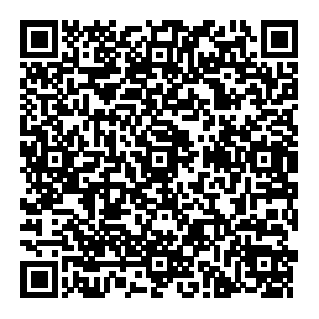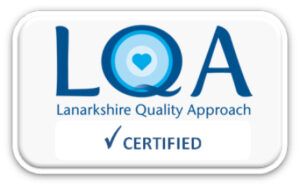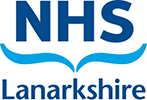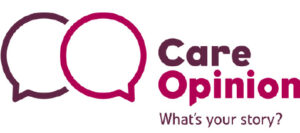Elective Caesarean Section
Information for patients
NHS Lanarkshire Maternity Department
PIL.ELECAE.18413.W
Introduction
The Enhanced Recovery following Obstetric Surgery in Scotland (EROSS) programme aims to enable women to go home the day after their caesarean section by involving you in all decisions around your care and surgery and aims to prevent unnecessary complications or a prolonged stay in hospital.
Enhanced recovery has benefits for both you and your baby. It helps you to prepare your body for your operation. It promotes early mobilisation and removal of your catheter following your operation. This helps to reduce blood clots (DVT) and urinary problems and infections. Enhanced recovery also aims to make you as comfortable as possible after your surgery and aims for you to return to your home as soon as is safe.
All these things help you to recover quickly from your surgery to make you as well as possible to look after your new baby.
Most women feel they get more rest at home in their own surroundings and potentially more support from their partner who can be with them the entire time at home. You will only be discharged if you and your baby are assessed as being medically fit.
Enhanced Recovery for Caesarean Section Preparation Class
You are invited to attend the enhanced recovery for caesarean section preparation class in the week before your delivery.
You will see a midwife, physiotherapist and an anaesthetist (the doctor who provides anaesthesia for your delivery) who will explain the Enhanced Recovery Programme; what will happen before the delivery of your baby and then your preparation for your return home.
You will need to come to hospital for 7am or 10am for your caesarean on the agreed date. We will phone you the week before to confirm the time.
Eating and drinking before your Caesarean Section
As you are having an anaesthetic it is important that your stomach is empty at this time.
If you are attending at 7am we ask that that you do not eat any food (including milky drinks, sweets and chewing gum) after 2.30am on the morning of your delivery. We would encourage you to drink clear fluids; which include water, black tea and coffee, isotonic sports drinks up until 7am on the morning of your delivery. Do not drink any ‘fizzy’ liquids. If you are diabetic please do not drink isotonic sports drinks.
If you are attending at 10am you should have a light breakfast (such as tea and toast) before 6am and then do not eat any food (including milky drinks, sweets and chewing gum). We would encourage you to drink clear fluids; which include water, black tea and coffee, isotonic sports drinks up until 10am on the morning of your delivery. Do not drink any ‘fizzy’ liquids. If you are diabetic please do not drink isotonic sports drinks.
We will give you two antacid tablets called omeprazole. Take one at 6pm the night before and one at 6am on the morning of your caesarean.
The day of your delivery
Please arrive at Ward 23 at the agreed time with your one birthing partner. This is the partner you wish to be with you in theatre and recovery and cannot be changed, until you arrive in the Postnatal Ward at visiting times. You will be welcomed by the midwife looking after you and your baby. Occasionally we ask women to attend the night before their caesarean.
Once you have settled into the hospital:
- A midwife will perform an antenatal check and take some blood tests
- The Obstetric and Anaesthetic doctors will come and meet you, and
- If you haven’t done so already we will ask you to sign a form saying you are consenting to the caesarean.
On the day of your caesarean we may have to change the order of the theatre list. Very occasionally the order is disrupted by emergencies from the maternity unit which can lead to a delay for some women. Very occasionally if there are a lot of emergencies in labour ward or unforeseen circumstances we have to change the date of your delivery, even after you arrive in hospital. We do our best to avoid this but if it happens we will arrange a suitable alternative date with you. This is a rare event and we hope this will not be your experience.
Your anaesthetic
Most women deliver under spinal anaesthesia. This is an injection of local anaesthetic into your lower back which numbs you from
the chest down. This is often the safest option, provides you with the best pain relief and allows you to be awake for the delivery.
It will take around 30 minutes for your spinal to be performed and for your anaesthetist to check it is working well.
General anaesthesia (going to sleep) is a safe alternative and in certain circumstances may be the safest option.
Your anaesthetist will discuss the options with you and you will have the chance to ask questions about the option you agree to.
For a spinal anaesthetic:
We insert a ‘drip’ (cannula) in your hand or arm
- To give you the anaesthetic you will either be sitting up on the bed or lying in your side
- We inject the anaesthetic into an area in your lower back. Once completed your legs will feel ‘heavy’ and numb.
- When everything is ready to begin, your birth partner can come into theatre and sit beside you. They will be wearing a hat and theatre clothes for hygiene reasons.
Side effects and risks of spinal anaesthetic
- Sickness, light-headedness, itching and shivering. If you experience any of these tell your anaesthetist and they will try and make you feel better.
- A woman may experience a severe headache after spinal anaesthesia (1:200). If this occurs tell your midwife and an anaesthetist will visit you.
- Nerve damage:
- Rarely (1:1000) a spinal anaesthetic can cause damage to the nerves in the back. Usually this results in temporary weakness or numbness in your legs which resolves.
- Very rarely (1:24000) this damage can be permanent and may result in paralysis (1:168000).
For more information about your anaesthetic you can visit the Labour Pains website.
During the delivery
Doctors, midwives, theatre nurses and sometimes neonatal staff are all present, so theatre can be quite busy.
- We place a screen in front of you but if you wish we may be able to lower this when your baby is born.
- A urinary catheter will be inserted as you will have temporarily lost the ability to empty your bladder after your spinal makes you numb.
- We make a cut across your lower abdomen, between your hip bones. The cut is usually about 20cm long.
-
- Delivering your baby takes 5-10minutes, although this may take longer if you have had caesarean or other operations before. You may feel some pushing and pulling sensations during the procedure.
-
- After your baby is born you will be given the opportunity to have skin to skin contact straight away, your gown and monitoring will be adjusted prior to surgery. A knitted hat is placed on the baby’s head to keep your baby warm.
- Also after your baby is born you will get an injection to help your uterus contract and minimise bleeding. This may be into your drip or your arm. This might make you feel a bit sick.
-
- Repairing the cut takes a bit longer, usually about 30-45 minutes, although again this may take longer if you have had a previous operation.
- All the stitches inside your tummy will dissolve and do not need to be removed.
- You will have stitches or staples in your skin. Your surgeon will decide which is best for you. Staples and sometimes stitches will need to be removed after you go home.
- You should keep the dressing on your wound for five days after your caesarean section.
-
- Your anaesthetist will stay beside you throughout the operation. If you experience discomfort, let the anaesthetist know.
-
- Rarely, there may be mild pain which we can treat with a painkiller through your drip or which you can inhale (breathe in). If this does not work, or the pain is severe, the anaesthetist will give you a general anaesthetic and put you to sleep.
- If you feel sick or faint during the operation tell the anaesthetist and they will give you medicine to make you feel better.
-
‘Coorie in’ with skin to skin
Immediate skin to skin contact helps regulate your baby’s heart rate, breathing and temperature. Skin to skin helps to initiate feeding, enhances your baby’s brain development and growth, and has a positive effect on maternal mental health.
Both mum and dad can have skin to skin with baby.
After your delivery
- When the caesarean is complete we will transfer you to the recovery area.
-
- We keep a close eye on you and your baby for an hour or two before we transfer you to Postnatal Ward.
- You can have a drink of water and, if not feeling sick and your recovery is straight forward, a light snack such as toast within the first hour.
-
- We encourage skin to skin contact with your baby as soon as possible after the caesarean.
-
- Your baby will be with you unless they need to go to the ‘special care baby unit’.
-
- We will stop your ‘drip’ before you leave the recovery area.
- As soon as the sensation begins to return in your legs, move your feet and ankles regularly as this helps to improve your circulation.
- We expect that you will be able to get up and walk approximately 6-8 hours after your caesarean. However, you must ask for assistance the first time you get out of bed as we need to be sure your legs have fully recovered after your anaesthetic.
- If all is well we aim to remove your catheter 6-8 hours after your operation.
- We will check your wound, blood pressure, temperature, pulse and sanitary towel regularly. This is routine for everyone.
- A midwife call (buzzer) system in the ward lets you call for assistance when you require it.
- If your baby is beside you the midwives and the maternity care assistants will help to change nappies and assist you.
Pain relief
- Following your delivery it is important you are comfortable enough to care for your baby.
- Following your delivery you will experience some pain over your wound and we will prescribe pain killing medication. Everyone feels pain differently, and will require different amounts of painkiller.
- In theatre we usually add a long acting pain killer to your spinal anaesthetic and at the end of the procedure may give you a painkilling suppository into your back passage.
- For pain relief following your caesarean we will prescribe
-
- Regular paracetamol
- Regular non-steroidal anti-inflammatory (ibuprofen)
- Stronger morphine or ‘morphine based’ painkiller that you can have if required.
- Morphine injections are also available if the above does not make you comfortable.
- All of these medications are safe during breast feeding.
-
- Please say when you need pain relief so you can be as comfortable as possible and avoid letting the pain interfere with the care of your baby.
Later on
- We give all women having elective caesarean a daily injection (Clexane) to decrease the risk of blood clots in their legs and lungs. Your midwife will teach you how to inject this as you will need to continue this for a total of 10 days, and self-administer once at home.
- You may be advised to wear leg stocking for up to six weeks after your operation. If you need to do this you will be given these before leaving hospital.
Physiotherapy
The physiotherapist will aim to see you on the day following your caesarean to teach you simple movements which will help you to feel more comfortable. They will give you a leaflet containing information on exercises which you should practice frequently.
Your visitors
Wait and see how you feel after the caesarean. You may wish to have plenty of rest and visitors can be exhausting. Initially, we will be busy making sure that you are comfortable. Your birth partner can phone and let them know your wishes. No visitors are permitted in the recovery bay before or after your surgery. Visiting hours apply once you are transferred to the Postnatal Ward (Ward 22) only. For your partner visiting hours are 9am-9pm. All other visitors, including any of your other children at 3-5pm and 6-8pm. For privacy and safety reasons, we encourage no more than two visitors at a bedside. We also operate a system of protected meal times. Your partner, but no other visitors are allowed during these times.
Going Home
The aim of Enhanced recovery is to get you back to normal activity as soon as possible. If you have recovered well and your baby is healthy and has established feeding you will be discharged the day following your caesarean section. Your Midwife will discuss your discharge with you.
Your Community Midwife will come and visit you and your baby after you are discharged.
Pain killers at home
- When you go home you should continue to take regular painkillers for the first week.
-
- Take regular paracetamol (1g four times daily)
- Take regular ibuprofen (400mg 3 times daily)
- Please ensure you have a supply of these at home before you leave hospital as you will not be given these to take home with you.
-
- You will also be given stronger painkillers to take home if you and the doctors and midwives looking after you think you will need these.
- You should gradually reduce the amount of painkillers you take as the pain lessens. You should stop the strong pain killers (if you have them) first, then the ibuprofen.
Driving
Most women do not feel fit to drive for a few weeks after a caesarean delivery, and many wait until after their six week check. You should stop driving after a caesarean delivery and only start driving again when your doctor says it is safe to do so.
You should also check your car insurance to see if there are any restrictions about driving after caesarean delivery.
Caesarean section and vaginal delivery
The risks and benefits of having a caesarean section compared to a vaginal delivery for both you and your baby will have already been discussed in detail with you, by your obstetrician and/or midwife.
If you require more information please discuss this again or
Further information can be found at the NICE website.
Your Care
Everyone is cared for individually depending on their needs. This is a very general summary of what you can expect during your stay in hospital, and variations may occur to suit your own circumstances.
We hope this is of some help and we wish you all the best with your baby’s delivery and for a speedy recovery.

Pub. date: August 2021
Review date: August 2023
Issue No: 05
Reference: PIL.ELECAE.18413.W 21_14735
If you need this information in another language or format, please e-mail:




